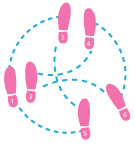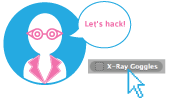

In the Hack-a-Day event my participants will learn how to hack in their every day lives. Through the creation of a league of superheroes, we will learn about the Open Web and collaborative work, as well as a bit of HTML and CSS.





When they're finished with their reviews, ask them what next steps would be for each project. How can each project be iterated and improved upon?